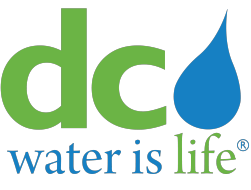Statement of Glenn S. Gerstell Chairman, Board of Directors DC Water and Sewer Authority on WASA Report
I want to thank Eric Holder and his colleagues at Covington & Burling for this comprehensive examination of WASA’s performance in discovering and dealing with issue of lead in the drinking water of some homes in the District.
When we learned about what happened, the WASA Board of Directors decided it wanted an independent and thorough investigation into how WASA handled the situation. And that is exactly what we got.
This Report is a complete and candid assessment of how some employees responsible for water quality at WASA mishandled the water testing program over a period of years, and how, as an organization, WASA failed to effectively communicate with the residents of the District of Columbia.
As Board Chairman and a District resident, I expect better. And I am confident that with operational and communications improvements already underway, as well as many of the recommendations offered by Mr. Holder, the residents of the District of Columbia will be better served by the Authority in the future.
While the Report is rightly critical of some in WASA’s organization, I want to make it clear that General Manager Jerry Johnson enjoys my confidence and I believe the confidence of the entire Board. I know he is committed to forthrightly addressing the deficiencies that have been identified in the Holder Report.
Clearly WASA made mistakes and down-played information in communications. But by no means does WASA bear sole responsibility for this problem. The Holder Report makes clear that the EPA was involved at every step along the way, provided inconsistent and shifting responses to WASA, and failed to see the problem until just a few months ago – long after this was a story in the media.
The Report cites instance after instance when the EPA, the Washington Aqueduct and the District of Columbia Department of Health were asleep at the switch. They all missed opportunities in the 2000-2001 and 2001-2002 monitoring periods to confront this problem, and after learning about the exceedance of lead action levels offered at best tepid responses.
And moving from our experience here in Washington to the national implications of the federal regulation in this area, it’s also obvious that the Lead and Copper Rule is ill-designed. The rule, and EPA's enforcement of it, and consequently, WASA's efforts to comply with it, were focused on how to achieve a passing score, not how to inform the public and how to truly and effectively address the underlying problem of lead levels in drinking water.
While the Report establishes that WASA followed 98% of the EPA’s rules in this area, it’s equally clear that even if WASA had complied 100% with the regulations, the District’s residents would still have lacked necessary information as well as recommendations to minimize exposure to lead in the water.
That’s why the Board has announced that we are going beyond the EPA requirements and addressing the problem head-on, in undertaking the nation’s largest program of removal of all lead pipes in public space. That action, together with the other corrective steps we will take in terms of WASA management and organization, will help ensure that this problem never occurs again.
The Board appreciates the work – both in the nature of the findings as well as in the recommendations – conducted by Mr. Holder and his staff and Professor Kathryn Newcomer of George Washington University and Dr. Lynn Goldman of the Johns Hopkins Bloomberg School of Public Health. I have already instructed each Board committee to examine both the Holder findings and recommendations and report back to the full Board about how and the extent to which those recommendations should be implemented.
Thank you and I look forward to your questions.







